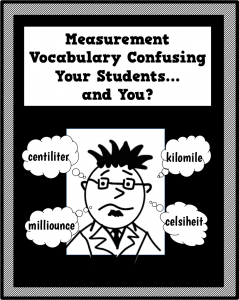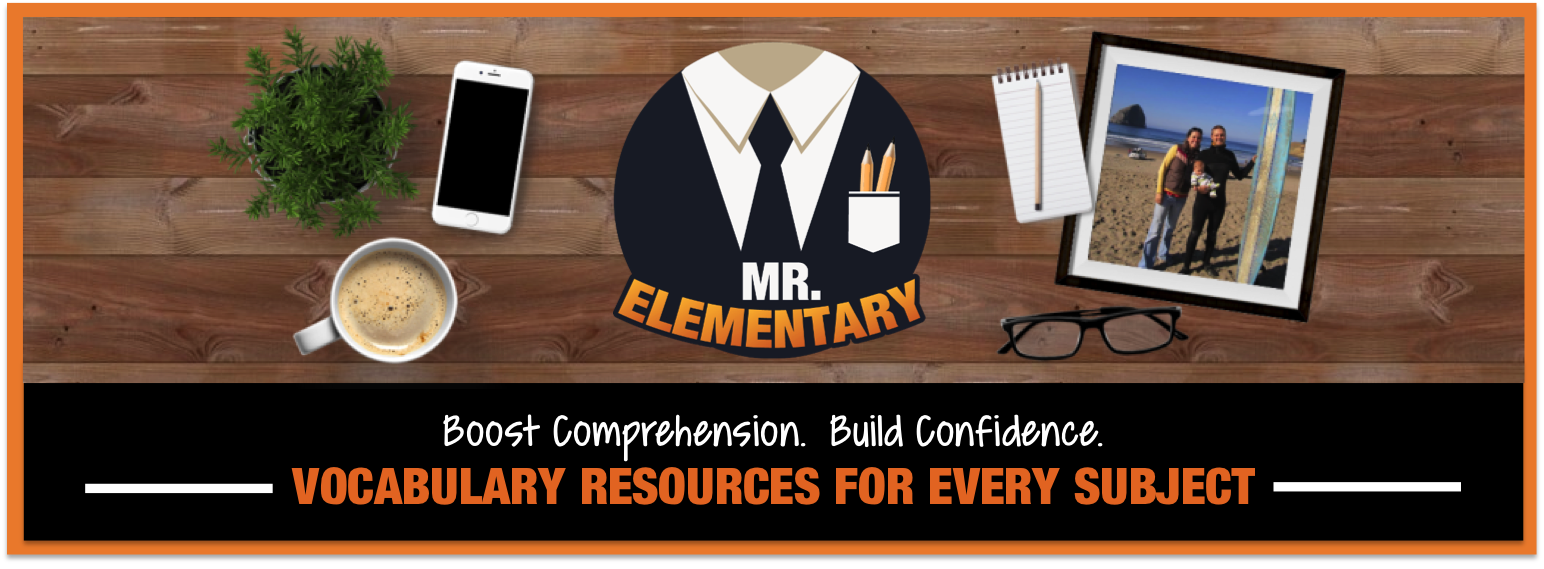
Milli, centi, kilo, gram, meter, liter, inch, quart, pound, standard, metric… I have a difficult time keeping all of this measurement vocabulary straight, let alone my students! Over the years I’ve come up with a few strategies for helping my students organize all of this terminology in their minds. Hopefully you can find a few take-aways from this list.
Metric vs Standard System
To help my students understand the difference between the English and Metric system, and why they need to know both, I always start by pulling down the world map. I touch the United States and say that America uses the standard system of measurement. Then, I touch the rest of the world and show that almost everyone else uses the metric system. This map does a great job demonstrating this, I’ll be using it from now on!

Nonstandard Units of Measure

I’ve found that starting my measurement units by using non-standard units of measure is a great way to begin a unit. Nonstandard units of measure can be anything. We might start by taking off our shoes (depending on if we just got back from PE) and seeing how many shoe lengths the whiteboard is. When doing this I always make sure that my students use the word “shoes” after the number they get to get in the habit of labeling their answers. I like using shoes as our nonstandard measurement tool because they’re a great lead-in to why we need a standard unit of measure like feet.
Estimate A LOT!
One of the best ways of I’ve found to help my students get a solid understanding of each unit of measure is by doing A LOT of estimation. At first, my students have a pretty difficult time estimating how many inches or feet long the door to the room is, or how many pounds their desk weighs. The more we estimate the closer their approximations get and the more solid their understanding of measurement becomes.
Let Your Students Actually Measure Things
When teaching each type of measurement it’s crucial to use actual measurement tools and not just look at pictures in a book. With so little time and so much to teach I’m always tempted to do this but it never pays off and I end up having to go back and round up all of the measurement supplies anyway for students with holes in their understanding.
Use Vocabulary Flashcards to Cement Student’s Learning
After I’ve worked with my students using actual measurement tools, then I find it useful to provide them with sets of the vocabulary words along with a picture, definition and comparison on them to help the vocabulary stick. To do this I created a set of measurement vocabulary cards. The cards work perfectly because they have the word and a visual on the front along with the definition and several comparisons on the back. I tried to make them look like the trading cards I always see my students coming to school with.
If there’s one thing I could drive home about teaching measurement it’s to not take any shortcuts. Let your students experience measuring using rulers, scales, measuring cups, etc. Use the vocabulary while you are doing this and THEN provide your students with pictures to help them remember the words. Remember, visuals are excellent but they can’t take the place of the real thing.

